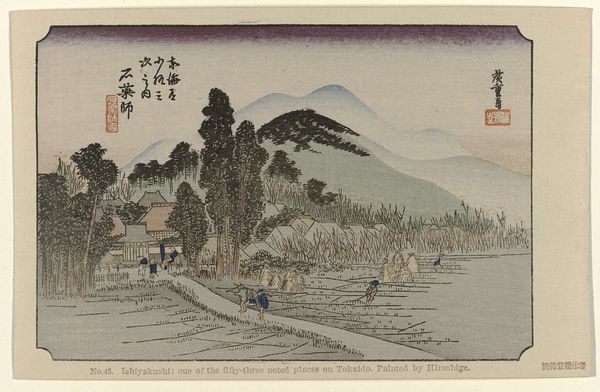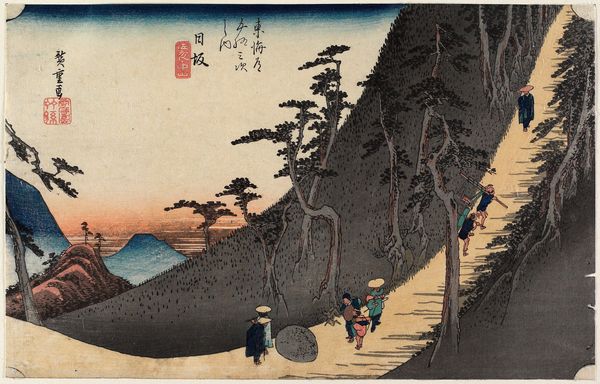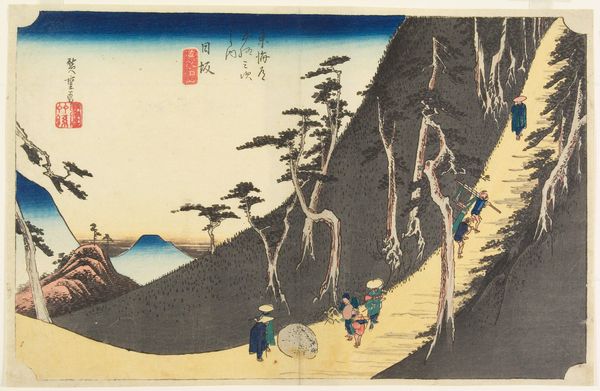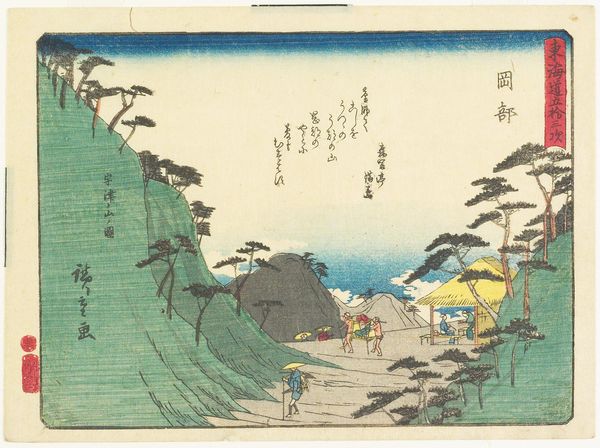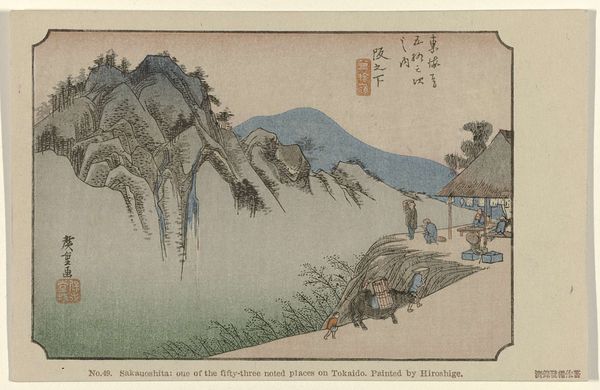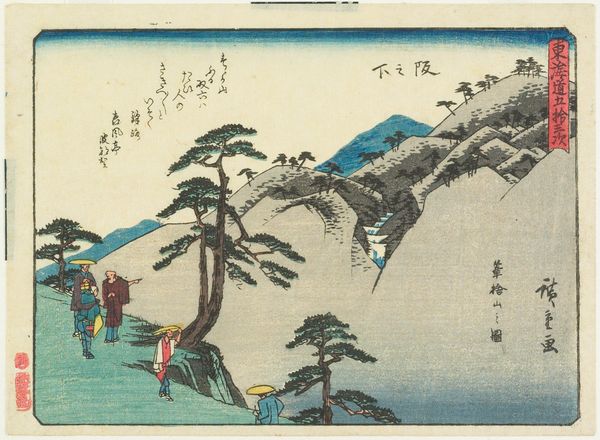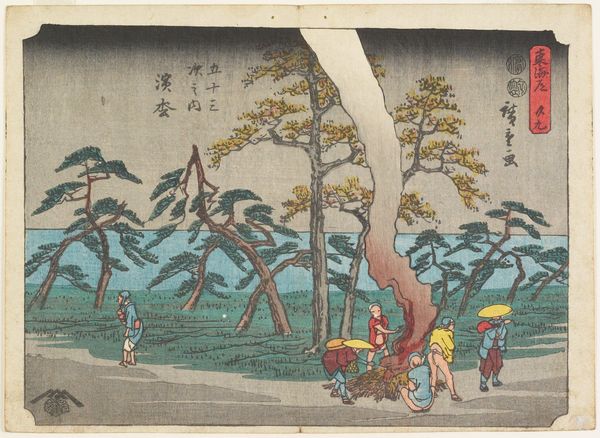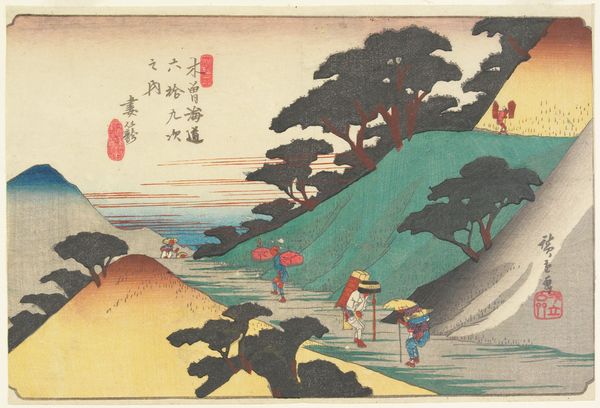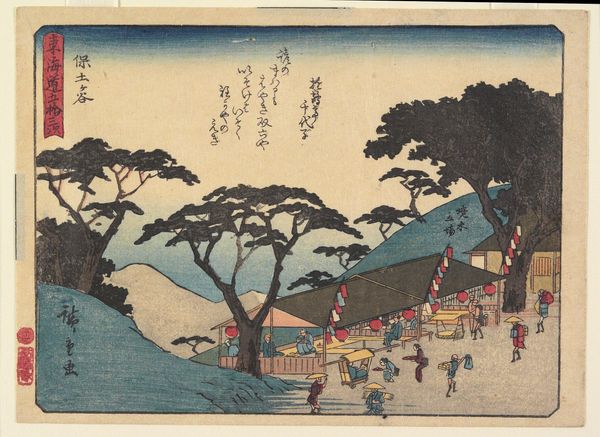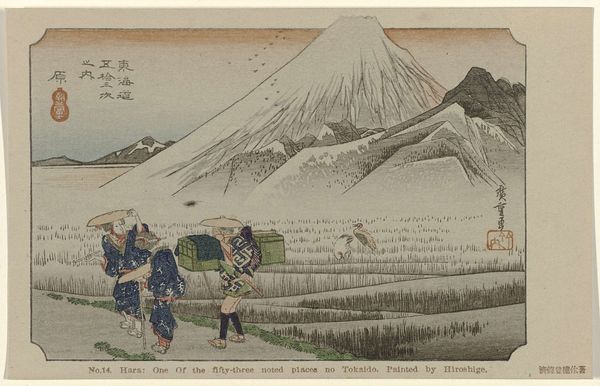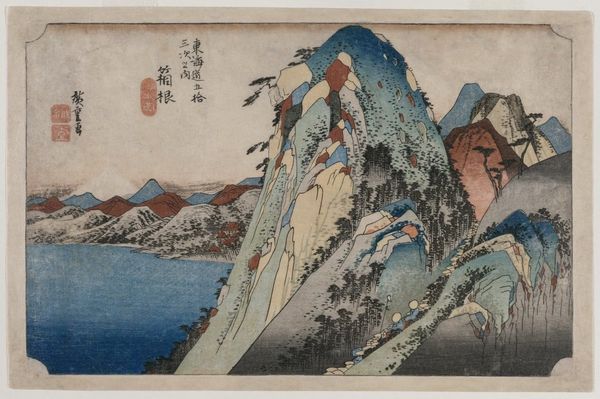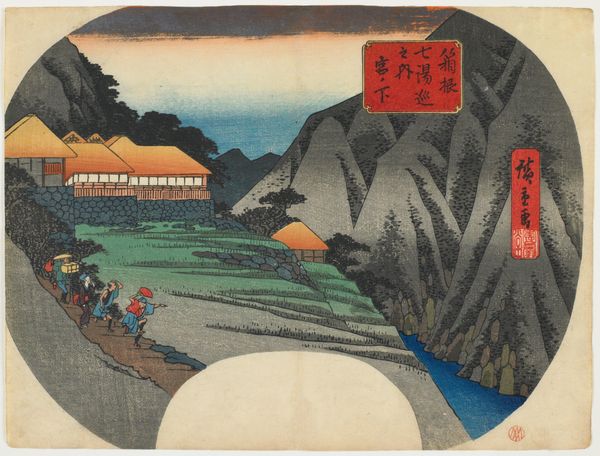
Dimensions: height 90 mm, width 141 mm
Copyright: Rijks Museum: Open Domain
Utagawa Hiroshige produced this woodblock print, Nissaka, as part of his series "Fifty-three Stations of the Tōkaidō" . The series captures scenes along the Tōkaidō road, the main route connecting Edo, now Tokyo, with Kyoto. This print gives us a glimpse into 19th century Japan, a period of relative peace and economic growth under the Tokugawa shogunate. Consider the figures struggling up the steep slope of Nissaka. The Tōkaidō was not just a road for pleasure; it was a vital artery for commerce, communication, and the transport of goods. The print subtly acknowledges the lives of ordinary people who used this road daily for work, contributing to the nation’s economy. To fully understand the social impact of such prints, we need to consider the rise of the publishing industry in Edo, the censorship laws governing what could be depicted, and the tastes of the urban middle class who consumed these images. The role of the historian is to connect the aesthetic qualities of the art with the broader social and institutional context in which it was made and consumed.
Comments
No comments
Be the first to comment and join the conversation on the ultimate creative platform.
